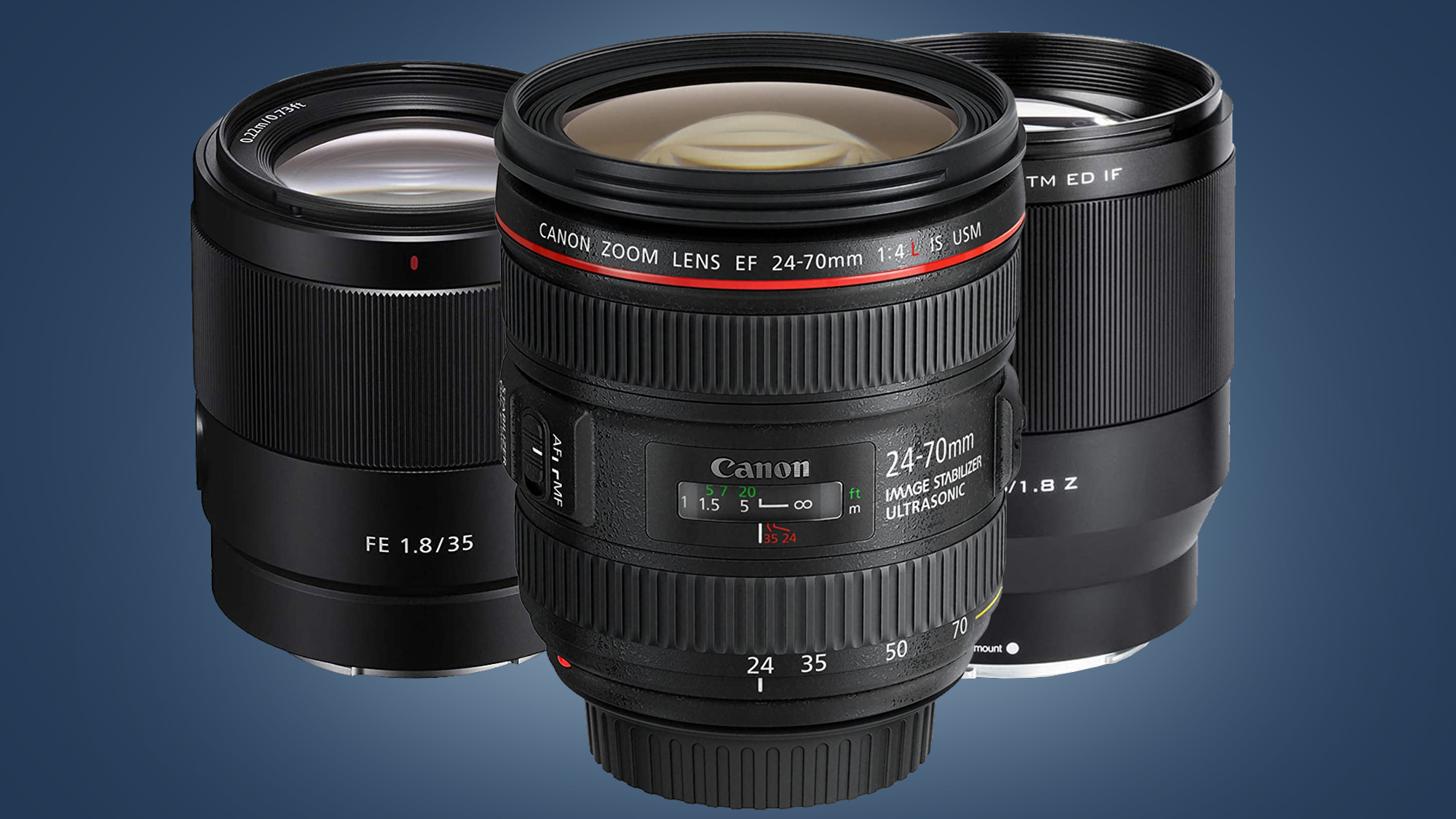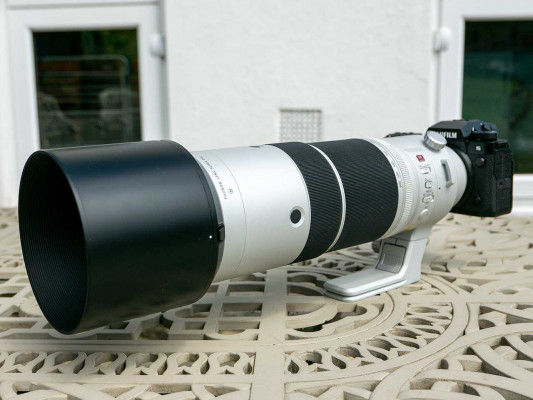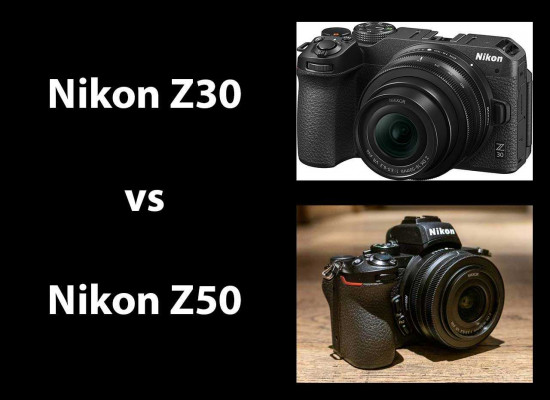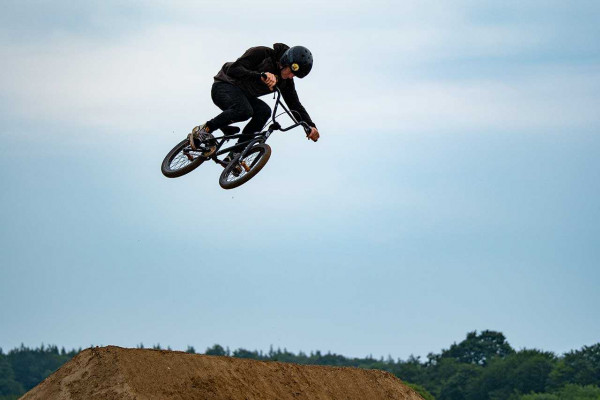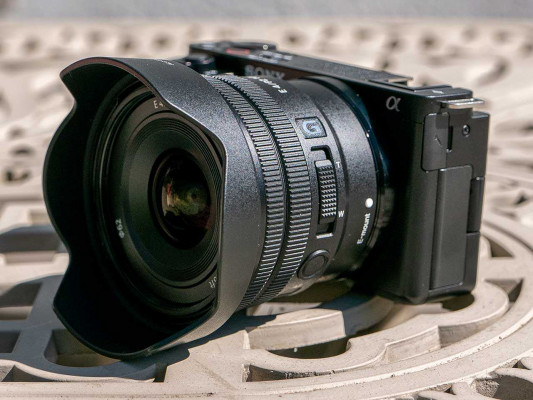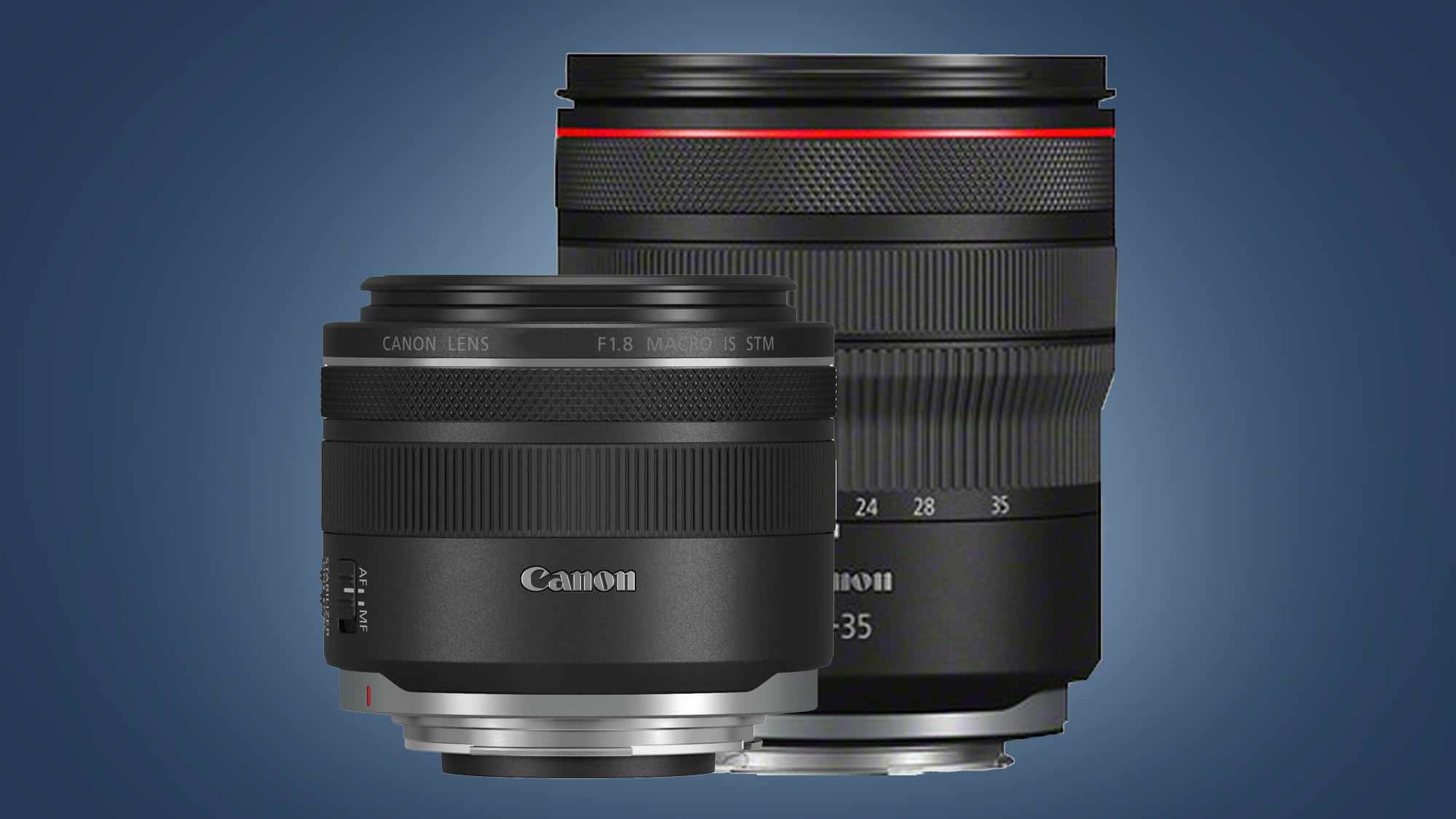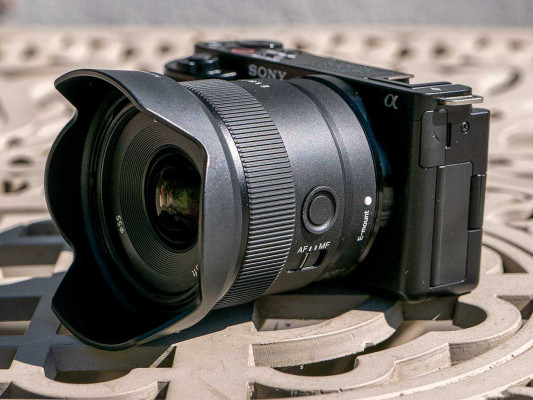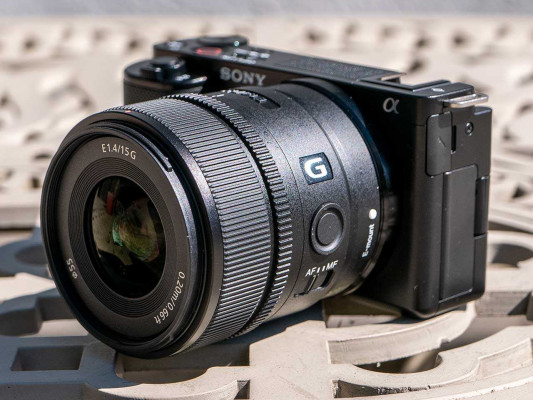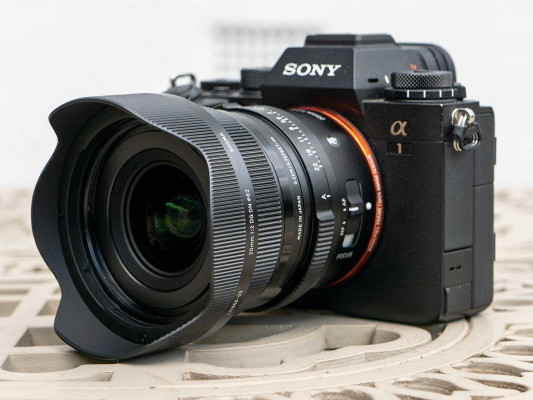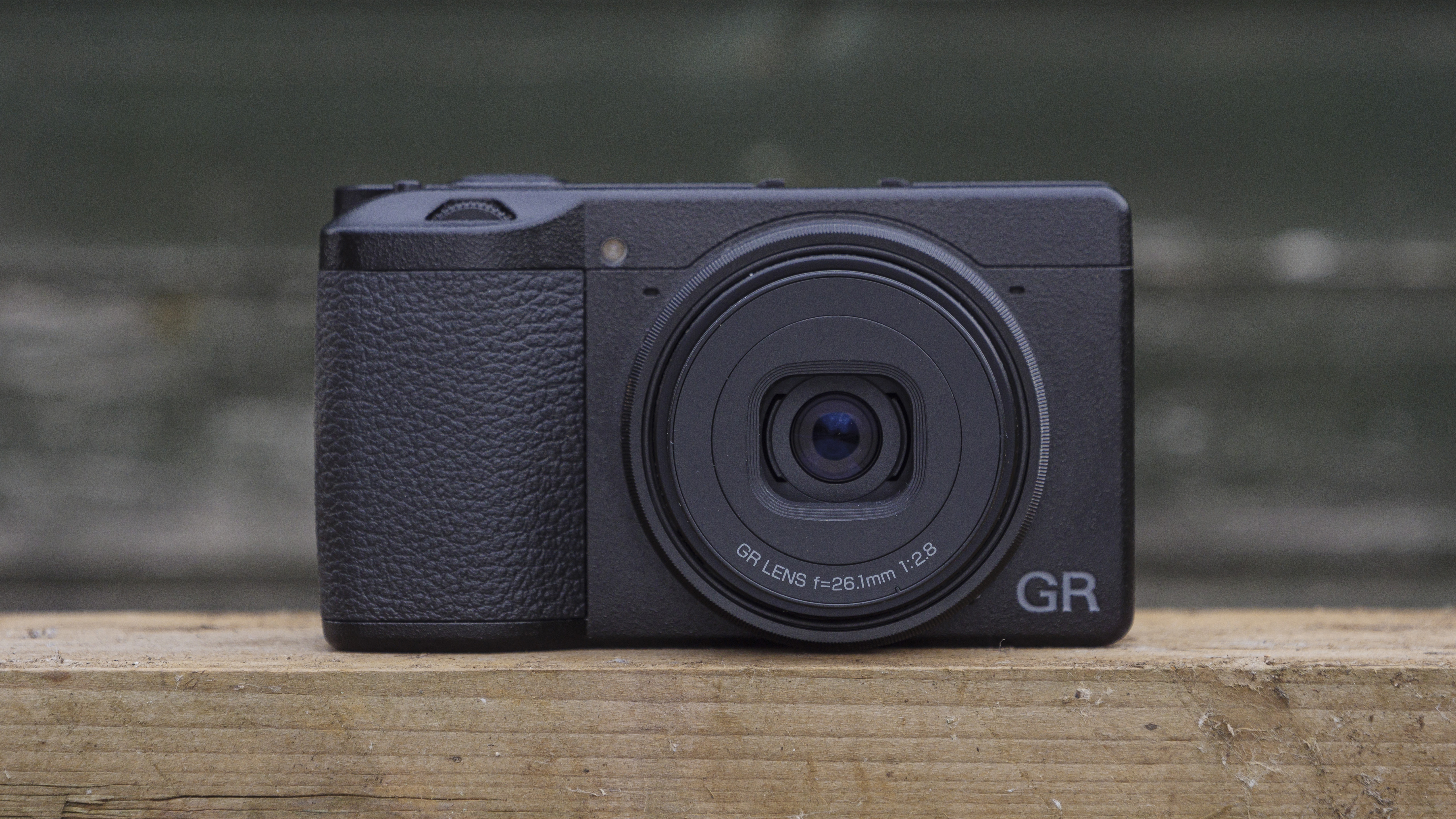Reviews

DJI Air 2S drone review
DPReview Latest |
Introduction
Autel Robotics, well known for its EVO II series and enterprise-level drones such as the Dragonfish, released its first compact, foldable sub-250g (0.55lb) drone earlier this year. It very much resembles DJI's Mini 2 and Mini 3 Pro models in terms of size, weight, build and functionality.
The Nano+ is the higher end model in Autel's EVO Nano series. At the time of its launch it offered considerable advantages over DJI's Mini 2. Notably, its 50MP, 1/1.28"-type sensor was more than twice the size of the Mini 2's, its lens was more than a stop faster, and it included 3-way obstacle avoidance. Subsequently, DJI released the Mini 3 Pro, which has similar specs and even outguns the Nano+ in some areas, but it also includes restrictions not present on the Nano+.
A big reason some users might prefer using an Autel drone is privacy. One doesn't need to create an account with Autel in order to fly any of its drones. Although it introduced a No-Fly Zone geofencing database in August, users aren't prevented from taking off in any particular airspace. DJI's geofencing, by comparison, will stop a drone from taking off in a restricted zone unless the pilot has received prior approval to fly and has it unlocked.
One thing that stands out is the Nano+'s price: $1099 for the Nano+ Premium Bundle, which includes two additional batteries and a carrying case. That's almost twice as much as the Mini 2 with a similarly configured Fly More Combo, and about the same as the most expensive version of the Mini 3 Pro kit, which include's DJI's premium RC controller. Is the Nano+ worthy of such a lofty price? Let's find out.
Editor's note: We received a Nano+ for review shortly after it was announced, but it arrived with an incomplete camera profile. As a result, we waited until recently, when a firmware update corrected this issue, to complete our testing. This review is based on firmware V1.3.26.
Jump to:
Aircraft| Photo and Video| Flight Modes | What it's like to fly | Conclusion | Samples
Key Features
- 50MP, 1/1.28" CMOS sensor
- 23mm (equiv.) lens with 85º FOV and fixed F1.9 aperture
- 4K/30p HDR video at 100 Mbps
- 249g at take off
- 3-way obstacle avoidance
- MOV and MP4 video capture
- Raw and JPEG image capture
- Up to 16X digital zoom
- Dynamic Track 2.1 (not yet available to test)
- SoundRecord that captures ambient sounds from the ground
- 10 km video transmission
- 28-minute flight time
Compared to...
Let's take a look at how the Nano+ compares to both the Mini 2 and Mini 3 Pro. All models can be purchased standalone or with add-on bundles that include two extra batteries and a carrying case (along with a few other accessories).
| Autel EVO Nano+ | DJI Mini 2 | DJI Mini 3 Pro | |
|---|---|---|---|
| Price | $949 (+$150 for Premium Bundle) | $449 (+$150 with Fly More Combo) |
$669 (+$189 with Fly More Kit)1 $759 (+$189 with Fly More Kit)2 $909 (+$189 with Fly More Kit)3 |
| Camera |
50MP, 1/1.28"-type sensor (69 sqmm) 23mm equiv. F1.9 (fixed) |
12MP, 1/2.3"-type sensor (29 sqmm) 24mm equiv. F2.8 (fixed) |
48MP 1/1.3"-type sensor (75 sqmm) 24mm equiv. F1.7 |
| Zoom | Up to 16X digital zoom | Up to 4X digital zoom | Up to 4X digital zoom |
| Video transmission | Autel Skylink, 2.7K/30p, 10 km | OcuSync 2.0, 10 km, 720p | OcuSync 3, 12km, 1080p |
| Video resolution | 4K/30p | 4K/30p | 4K/60p |
| Video bit-rate | 100 Mbps | 100 Mbps | 150 Mbps |
| 10-bit video | No | No | Yes4 |
| Audio recording | SoundRecord | No | No |
| Obstacle avoidance sensors | Forward, Backward, Downward | N/A | Forward, Backward, Downward |
| Flight time | 28 minutes | 31 minutes | 34 or 47 minutes5 |
| Dimensions | 142×94×55 mm | 131x81x58 mm | 145x90x62 mm |
| Weight | 249g | 249g | 249g |
1. No controller included
2. Includes standard RC-N1 controller
3. Includes advanced DJI RC controller
4. When using the D-Cinelike color profile
5. Battery for extended flight time exceeds 250g takeoff weight
The Nano+ has a superior camera compared to the Mini 2, delivering sharper and clearer images, albeit tests yielded less pleasing colors. It also includes obstacle avoidance capabilities, captures 4K/30p video, and delivers similar flight time.
The Nano+ comes in four colors: grey, white, red, and orange.
The Nano+ controller uses a new app called Autel Sky, created for Autel's Nano and Lite drones. One feature it offers is SoundRecord, which allows you to record voices and sounds from the smartphone attached to the controller – an interesting option not found on DJI's Mini models.
Aircraft and controller
At 142×94×55 mm folded down, the Nano+ has a frame that’s slightly longer and wider than the Mini 2, but can still fit in the palm of your hand. What's impressive is that Autel was able to add obstacle avoidance sensors on the front, back and bottom of the aircraft while keeping it under 250g. This means that in most countries, you won't need to register the drone if you're using it as a hobbyist. It's your responsibility to check your local guidelines.
 |
| The Nano+, left, is slightly longer than the Mini (middle). The Mini 3 Pro is on the right. |
To keep the drone below that weight limit, Autel opted for screw-in propellers, eliminating heavy clips entirely. The Nano+ includes a small screwdriver and bag of additional screws to replace all propellers. The battery slides in the back, and above it is a place to insert a memory card and a slot to attach the USB cable.
I love the fact that Autel has included the ability for users to switch the Nano into ATTI (also known as Attitude) mode.
Autel has made extraordinary improvements to the remote controller that powers both the Nano and Lite series of drones. In my review of the Autel EVO II drone, I had issues with two buttons on the back of the remote. The unfortunate placement caused me to trigger functions when I didn't intend to in the first place. Those are gone on the new remote.
Overall, the remote is lightweight, ergonomically friendly, and it's easy to attach a smartphone to the top with a USB-C cord Autel provides. In my opinion, however, Autel made three missteps with the new remote.
DJI provides two slots on the bottom of the remote to store the joysticks. While users may not want to unscrew and screw them back in, it's a convenient feature to have if you're packing the remote, drone and batteries into a bag for transport. Not having an obvious place to store the joysticks is a bit of an inconvenience.
 |
| The remote that powers the Autel Nano and Lite series has been improved dramatically compared to the one that powered previous generations of EVO drones. |
I love the fact that Autel has included the ability for users to switch the Nano into ATTI (also known as Attitude) mode. For those unfamiliar, ATTI mode disables GPS. GPS is preferred in most scenarios because it allows the drone to hover in place automatically. Sometimes, especially in congested areas, you can't get a decent GPS signal and this is where ATTI mode comes in handy.
However, I can't make sense of why you need to use the app to switch in and out of ATTI mode. There should be a dedicated switch on the remote for this purpose.
What's most perplexing, though, is that while Autel has the Power, Photo, Video and Return to Home features prominently displayed, there's no way to switch flight speeds. If I'm running lower on battery power than I expected, I'd like to atomically shift into the fastest mode immediately, in this case 'Ludicrous' mode, even if it disables the obstacle avoidance sensors.
If, on a whim, I want to record some cinematic footage and need to switch modes, I should be able to flip a switch on the remote. While these flight modes are now featured prominently on the top-left-hand side of the Autel Sky app, it's nice to have a physical switch to toggle between Smooth, Standard, and Ludicrous modes.
Photos and video
The Nano+'s camera has a 50MP, 1/1.28" CMOS sensor mounted on a 3-axis gimbal. It has a 23mm (equiv.) fixed-aperture F1.9 lens with an 85º FOV and can zoom up to 16X digitally. Autel says the RYYB color filter array in its cameras increases light input by 40% compared to those with a traditional RGGB color filter.
 |
| Even though Autel boasts of a 'RYYB color filter array design,' some of the photos that come off the camera appear dull and flat. |
For comparison, DJI's Mini 2 drone offers a 12MP camera and the Mini 3 Pro includes a 48MP, 1/1.3"-type Quad Bayer sensor and F1.7 lens, though it can only capture single 48MP images, and Auto Exposure Bracketing (AEB) and other multi-shot modes default back to 12MP.
The Autel Sky app gives you the ability to shoot in Auto, Manual (Pro), or Shutter (S) Priority modes. Burst shooting, AEB in 3/5 shots, and Interval shooting up to 60s are available but only in Auto mode at this time.
 |
| The Nano+ boasts a 50MP, 1/1.28-inch AF F1.9 camera. |
Autel has introduced a feature called SkyPortrait. After selecting yourself and/or a group of people as the subject of a photo, the drone will automatically fly to a location that includes everyone in the image and the background will be blurred for a more 'professional-looking' image. I tried this feature out but the resulting photos were underwhelming. While it seemed to work in the app, the photo did not have a blurred background.
Also, when you choose 'Close,' the drone will lurch and approach within a few feet of the subject. People not accustomed to drones might be a bit alarmed.
 |
| Depending on which mode you choose – Close, Medium or Long – the drone will position itself accordingly. The background blur promised on these images, however, did not materialize. |
The Nano+ allows you to record up to 4K/30p HDR video at 100 Mbps with either the H.264 or H.265 codec. Log capture is available, but it's only 8-bit, which could present challenges when grading the footage.
Digital zoom allows you to zoom in on subjects up to 16X in 1080p. As of now, zooming in a fluid manner is a bit tricky. You need to touch the screen, then scroll up and down on a wheel. It tends to trigger brightness on the camera, as that control also pops up in the same area, and blow out the sky when recording video. Unlike the Mini 2, .MOV files can be captured as well as .MP4.
Unfortunately, video suffers quite a bit when zoomed to 16X (and even before that point). That's not terribly surprising given that the zoom is digital rather than optical, but it does undercut one of the marketing points of the Nano+.
What's worse, though, is that you can't record video in HDR or Log when you're in Pro mode. Simply put, this is disappointing. Pro allows you to shoot in Manual, Shutter priority and so on. Auto mode tends to blow out highlights in certain areas and having maximum control over each setting is crucial. I was hoping this would be rectified with the latest firmware update (V1.3.26) in early May, but this didn't happen.
Early versions of the Nano+ struggled with image stabilization and gave you jello footage, but this is no longer an issue. The gimbal also maneuvers fluidly, allowing you to capture smooth and cinematic footage with a tiny drone.
One feature Autel introduced with the Autel Fly app that powers the Nano+ is MovieMaster. It allows you to upload imagery, add music, and generate a custom video clip that can be instantly shared on social media channels. You don't need to have the drone turned on or connected to access it. Simply select 'Album' at the bottom-left-hand side of the navigation menu on the Home Screen of the Autel Sky app.
From there, you can select the video clips and photos you took with your drone in app. It also gives you access to your smartphone's library of imagery. There are two modes for creating in MovieMaster: Theme and Manual. With the Theme mode, there are 8 different custom templates including Mirror World, Sports, Skyline and Artistic Conception that manipulate your footage for a distinctive look.
It bothered me a bit that I had to select 8 or 10 files to upload, depending on which theme I chose in this mode, in order to create an automated clip. That's a lot of content files, especially if you want to keep it simple. Also, I think you should be able to alter between templates. Does anyone want to watch an entire video with a mirrored effect? Typically you would insert something like that sparingly in a video.
 |
| MirrorWorld is one of the effects you can create with MovieMaker. However, who would want an entire video with this effect? It should be interchangeable with other enhancements. |
Theme mode also selects the soundtrack for your clip. I didn't see a way to customize or select different tunes. There are also transitions you can add in the form of templates with text in different fonts that can be customized. I generated a clip and noticed the algorithm is a bit off when selecting ideal parts of a clip and transitioning to the next one.
The Manual mode is a bit better in that you can select, at minimum, one clip and be able to proceed with creating your video in MovieMaster. If you used SoundRecord when capturing your initial clips, those ambient background noises will be there and you won't need to add music. You will, however, need to edit out the app's voice prompt that says 'Start Recording' when you begin recording a clip.
Originally, Autel stated it would have a microphone embedded in the remote. Instead, when activated, SoundRecord uses your smartphone's microphone to record surrounding noises while you film video.
One thing to note with SoundRecord is that surrounding sounds are recorded on your smartphone only. They won't show up if you take your SD card out of the drone and attempt to edit footage on your computer. You could try and extract the sound from the clip, but it may be easiest to share the video directly from your smartphone. If I drop the clip from my smartphone into a Dropbox folder, for example, the sound will show up on the clip on my laptop or desktop where I do a majority of my video editing.
Autel provides a library of music containing various genres including hip hop, pop, atmospheric and classic. You can also upload local music from your smartphone's library, granted that music isn't copyrighted. The ability to select each clip and shorten it, add stickers, along with captions is also available.
There are 45 filters you can add to enhance your footage. Personally, I think this is far too many. Some, such as 'Foodie', don't make sense and many seem to give the video a blue or greenish overcast. These are typically tones you'd want to adjust when post-processing. Autel should pare this down to 20 and look at including the types of flattering filters that are most commonly used for film editing - especially for footage primarily shot in outdoor settings.
The Autel Sky app and flight modes
The Autel Sky app was developed for the Nano and Lite series and is much cleaner, pared down and easier to use than Autel's older Explorer app. Where the Explorer app felt crowded and chaotic, the new one is much more streamlined. It isn't as straightforward as DJI's Fly app, which brings everything to the forefront on the side menu, but there has been a lot of progress on Autel's end in making this a much more user-friendly interface.
The Autel Sky app was developed for the Nano and Lite series and is much cleaner, pared down and easier to use than Autel's older Explorer app
The 3-way obstacle avoidance system worked extremely well initially. However, with the latest firmware update, it will warn you that you are perilously close to an obstacle when there isn't one around. Hopefully this bug gets fixed in a future update. Depending on how close in proximity you get to an obstacle, the color will turn from yellow, which is a friendly warning, to red, which means you're coming close to collision.
One annoying feature is a voice that constantly announces how close you are to an object once you're within 25 feet (7.6m). This is a bit distracting, especially if you're trying to fly in peace and not disturb those around you. The app also encourages you to turn the volume up to get these notifications. Obstacle avoidance on the Nano+ only stops the drone from colliding with an object – there's currently not an option to bypass it, similar to DJI's APAS (Advanced Pilot Assistance System).
Another thing that's curious about the Autel Sky App is that Photo, Video, Hyperlapse, and other modes are listed vertically on the side while the rest of the menu items at the top are horizontal. It reminds me of the iPhone's main camera display or the MIMO app that powers DJI's OM5.
 |
| Autel has cleaned up its new Sky app quite a bit and made it more user-friendly, especially compared to its previous Explorer app. |
What was confusing for me initially was figuring out how to get the camera out of Auto mode. While being able to switch from Auto to Manual focus is easy, and prominently displayed, you need to scroll down to 'Pro' in order to adjust the ISO, Shutter, and Aperture. Now Autel has added 'Shoot' to simplify this a bit more.
When you're shooting any type of panorama, the app tells you which photo in a sequence it's on instead of a mere percentage.
As mentioned earlier, you can't shoot in Auto Exposure Bracketing (AEB), HDR or Burst modes when using Manual settings or 'Pro' mode. Shooting Log video is also not possible. The camera automatically defaults to Auto mode in Video, Hyperlapse and others outside of the Pro option in the main menu. Autel still has some work to do here to make its app a smoother, more fluid, and slightly less confusing experience.
One thing that bothers me about Hyperlapse is that there are only 3 speed settings, and the slowest is 2.2 mph. Recording a 10-second clip of a skate park meant the drone made its orbit 3 times around the park. DJI, in comparison, has a dial that allows you to select a speed starting at 0.9 mph and gradually dial it up in increments of 0.1 mph.
A gear icon at the top allows you to access more advanced settings. This is where you can calibrate the compass, activate obstacle avoidance, select whether you want to shoot Raw, JPEG, or both, and even activate SoundRecord.
Something I really appreciate is that when you're shooting any type of panorama, the app tells you which photo in a sequence it's on instead of a mere percentage. The display for this particular feature is really clean.
 |
| Getting a progress update when shooting panoramas is helpful. |
There are four Intelligent Flight modes that can be accessed from the top right-hand side of the navigation menu. With a single click of a button, the drone will automatically create a professional-grade clip. Rocket, Fade Away, Orbit and Flick are the four that are available to create automated cinematic video clips.
What's it like to fly?
 |
| The gimbal often 'self-checks' before take off and landing, causing inconvenient delays. |
The Nano+ flies smoothly and remarkably well. It's rumored that Autel hired some of DJI's former engineers to work on flight performance, and if so, it shows. While I thought the EVO II flew like a school bus or brick, that simply isn't the case with the Nano+. The camera is easy to maneuver, as well, and the drone handles the automated flight modes with precision and ease.
 |
| Released in January, Autel's Nano+ was the first sub-250g drone to have obstacle avoidance sensors placed on the bottom. |
The Nano+ has what Autel refers to as 'Level 5 Wind Resistance'. This means it's able to handle winds of 29–38 km/h (19–24 mph). When I took off on a windy day in Chicago I was scared the drone could possibly blow away, but it managed to capture stable images and video. The Intelligent Flight modes execute beautifully and give you smooth footage.
Despite its great flight performance, I ran into a few challenges worth noting.
Autel's updates can make it tedious to get up and running. For instance, a firmware update requires that the drone's battery be charged to at least 50%. The process for upgrading to the latest firmware takes about 15 minutes, if not more, to complete. Other drones in its class typically take around 5 minutes, tops. While this isn't a dealbreaker, it's something to keep in mind if you decide to purchase one.
The Nano+ flies smoothly and remarkably well
Compass calibration requires three different types of drone rotation instead of two. This isn't a big issue. What gets me is that the IMU calibration contains six very time-consuming steps that require you to place the drone on a flat surface in a variety of positions. Someone who purchases this as their first drone, or less experienced hobbyists, could easily be overwhelmed with this level of preparation.
Finally, every time I power up the drone the gimbal will start 'self-checking'. This delays the time it takes to launch the drone and shut it off by a few minutes. If it happens once in a while, it's understandable. But practically every time becomes an annoyance, especially if I'm trying to capture a specific interval at sunrise or sunset, or a moment in time, and don't want to wait longer than necessary.
Odds and Ends
Autel's SkyLink system has a 10km (6.2 mile) transmission range. Tri-band operating frequencies provide solid anti-interference capabilities and transmit 2.7K/30p HDR video to your smartphone. There isn't any kind of system to warn when other aircraft are nearby.
The Nano+ supports MicroSD memory cards up to 256GB (a U3 speed class is required) but doesn't contain any internal storage.
The Nano+ can fly up to 46.7 km/h (29 mph) in Ludicrous mode, 32.2 km/h (20 mph) in Standard and 17.7 km/h (11 mph) in Smooth which, as the name suggests, is a mode used to capture smooth, cinematic-grade footage. It can fly up to 2,500 feet AGL (above ground level), and a 500 meter (1,640 foot) default distance limit can be unlocked for an up to 10km (6.2-mile) range.
Who's it for?
'Who's it for' is a question I had to mull over for a bit. Obviously, a sub-250g drone is something that would appeal to a consumer, especially since it isn't necessary to register with the FAA or similar agencies in many countries.
As a compact drone, there's a lot to like. It's easy to fly, is incredibly quiet, includes 3-way obstacle avoidance, and handles very well.
It's the hefty price tag that's questionable here. You get 3 minutes less battery life than the DJI Mini 2, and the remote is basic and doesn't have any type of LED screen that provides shortcuts to pertinent flight info. When you consider that DJI's Mini 3 Pro can be had with a remote that has a bright OLED screen, eliminating the use of a smartphone, for a similar price, you have to question the value you're getting with the Nano series.
 |
| There are some frustrating limitations with the Nano series, such as not having access to HDR or Log video profiles in Pro mode. |
I would say, given the $949 starting price, that this drone was built with a more professional photographer or videographer in mind. Perhaps they shoot a lot of indoor footage or real estate. While the 2,500 foot AGL limit makes sense for tower inspections, you can't really fly a tiny drone too high. Wind speeds and turbulence pick up considerably as the drone ascends.
It's definitely not a total solution for a professional. The fact that you still can't shoot in HDR, Log, AEB, burst and so on outside of Auto mode is extremely disappointing. If it was possible to shoot AEB in Pro mode with 50MP resolution, that would give the Nano+ an edge, especially considering the Mini 3 is limited to single images at its highest 48MP resolution.
The fact that you still can't shoot in HDR, Log, AEB, burst and so on outside of Auto mode is extremely disappointing
An average hobbyist likely won't care about such limitations on a DJI Mini 2 at half the price. The Mini 3 Pro doesn't have these limitations, save for shooting single images at 48MP, and gives you 10-bit video shooting capabilities as well.
Final thoughts
For a sub-250g drone, I like the Nano+. My issue comes down to the camera profile limitations that I thought would be resolved 6 months after its release in January. The 16X digital zoom doesn't capture high enough quality make it a differentiating feature. Also, to my eye, the colors—despite Autel's hyped RYYB accuracy—looks duller and less vibrant compared to what'd you'd see from a competing DJI drone, even those without the Hasselblad profile. SkyPortrait, while functional in the app, does not produce the results it promised yet.
For people who want a superior camera, as far as image clarity is concerned, on a lightweight drone that's incredibly easy to transport, the Nano+ is an option to consider. The fact that it has obstacle avoidance, doesn't require you to create an account to fly, and won't run the risk of being grounded is appealing.
At times, it takes several minutes to connect to enough satellites to take off with GPS. This issue also plagues DJI's Mavic 3 series, but that model boasts a 46-minute battery life. Having to wait a few minutes to take off on a drone with 28 minutes of battery life is inconvenient.
 |
| Some of the Nano pictures I took with earlier firmware had a blue cast to them. But the level of detail in the photos is excellent, especially for a tiny drone. |
I needed to upgrade the firmware quite a bit, at least three times. That takes at least 15 minutes, which can be tedious. Also, takeoffs were regularly delayed as the gimbal was often 'self-checking' – even after it was calibrated. I felt like these gimbal notices popped up almost every time I took off or landed. Add the amount of time it took to connect to GPS, and the delays became irritating.
If Autel can address some of the issues... it could create a worthy alternative to DJI's consumer offerings.
Unfortunately, there were some advertised features I wasn't able to test. The effectiveness of Dynamic Track 2:1, which can identify and follow people, animals, and cars could very well give this drone another use case, but it wasn't available as of this writing.
I want to see Autel succeed in the long-term. It has a formidable track record with enterprise-level drone users and some I know prefer them to DJI. If Autel can address and improve on some of the issues with its remote control, work out the bugs, flesh out some features in its Sky app (including MovieMaster), and remove the annoying voice prompts, I think it will have the ability to create a worthy alternative to DJI's consumer offerings.
Right now, with these caveats and at this price, you should carefully weigh your flying needs before buying.
What we like
- Quiet, easy to control flight
- 3-way obstacle avoidance
- ATTI mode
- Privacy-oriented
What we don't
- Costly for a drone in its class
- Many useful features disabled in Pro mode
- No 10-bit video capture
- Remote is too pared down
![]()
Sample gallery
Please do not reproduce any of these images without prior permission (see our copyright page).



